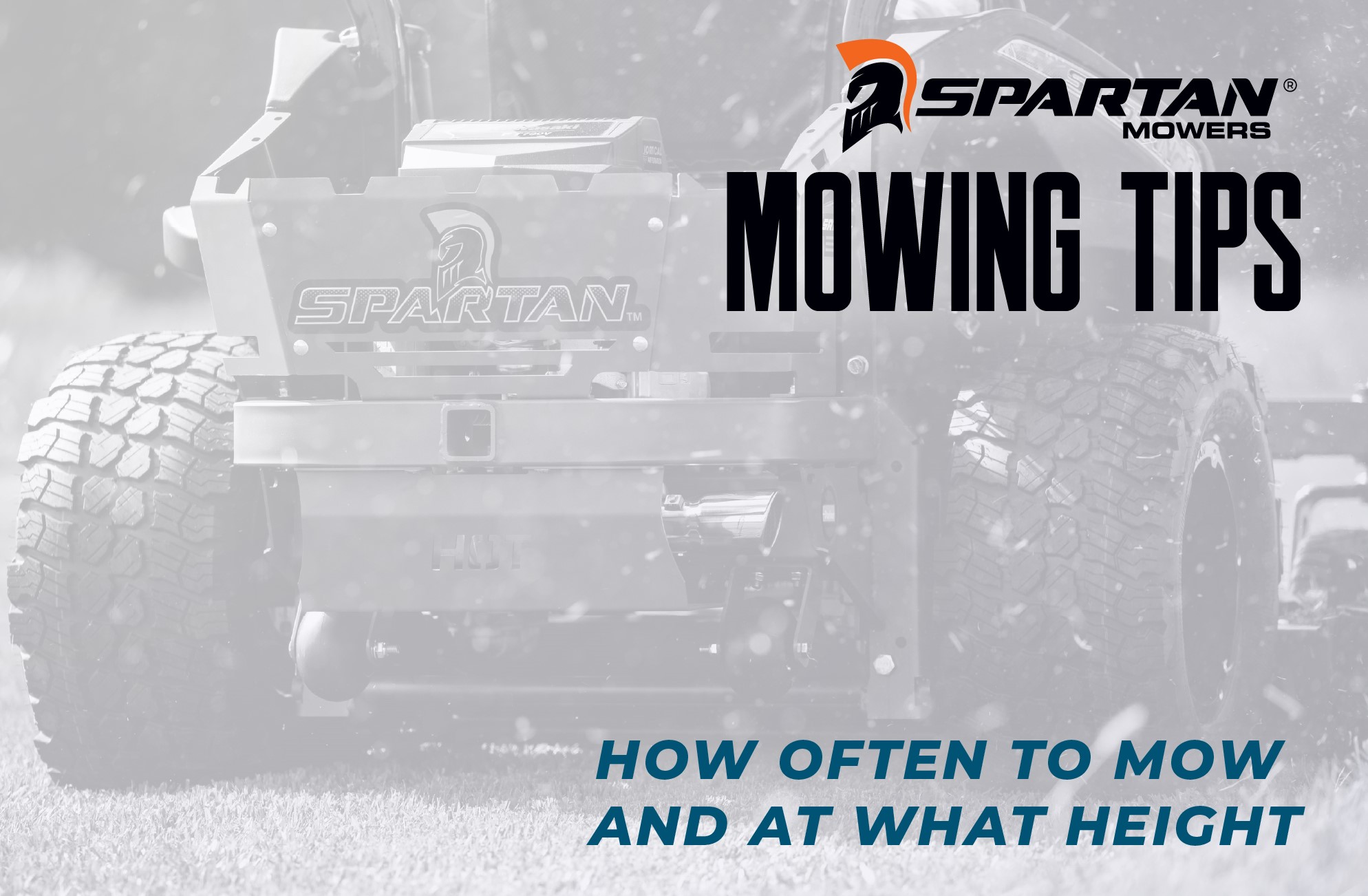
Knowing a few facts about the grass covering your lawn can make the difference between a smooth palette of green or a chaotic high-maintenance mess. This is a basic guide to the most popular types of grass found in south/southeastern region of the United States.
HOW OFTEN TO MOW YOUR GRASS
No two lawns are the same...even with the same grass. The rate of grass growth is dependent on the type of grass, weather, time of year, soil quality, water availability, and nutrient availability from fertilizers. When determining how often to mow your lawn, you can always follow this simple rule: never remove more than one-third of the leaf blade in a single mowing. In other words, if your mower is set at 3 inches, mow before your lawn reaches 4.5 inches high.
St. Augustine
Begin mowing as soon as the grass turns green in the spring. Be very cautious not to mow St. Augustine too low and too early, as this is very damaging. St. Augustine should be mowed every 5 – 7 days and less often during times of drought. During the winter and colder temperatures, St. Augustine will only need to be cut every four weeks.
Centipede
Begin mowing Centipede grass in the spring when it starts turning green. Centipede grass is slow growing and should be mowed every 5 – 7 days, and less often during times of drought. Centipede grass should not be mowed too short or too often due to its delicate nature.
Kentucky Bluegrass
Mow Kentucky Bluegrass on the higher side to aid in root growth. Mowing too low will encourage weed invasion. Kentucky Bluegrass tends to grow faster in the shade than in the sun. Mowing every 5 – 7 days should keep your Kentucky Bluegrass maintained. Mow less often if grass becomes drought stressed.
Tall Fescue
As long as Tall Fescue is mowed often and at the suggested heights, it is very resilient. Set your blades to 3’’ in the summer to cut down on stress to your Tall Fescue lawn. Be cautious and mow less frequently if the grass becomes stressed from drought conditions.
Zoysia
Start mowing Zoysia grass at 2’’ during the spring, and slowly increase the height as the weather begins to warm. This type of grass is slow growing. However, it is good to mow on a regular basis in order keep a thatch layer from being formed.
Bermuda
Begin mowing Bermuda grass on a regular basis in the spring when it turns green and reaches an optimal-mowing height. During the summer months, you may find yourself mowing every 5 – 7 days. However, mow less if the grass is drought stressed.
Bahia
Once Bahia grass begins actively growing, it doesn’t take much to maintain. A mowing schedule of every 7 – 14 days should do the trick. Mowing this type of grass at a higher height will help aid in a deep root system, as well as, create a higher stress tolerance.
HOW SHORT IS TOO SHORT?
Knowing how close to mow your lawn doesn’t have to be a guessing game. But grass that is cut too short is more susceptible to weed invasion, drought and heat damage. A low mowing height can leave brown or bare-looking spots in the grass. If the grass is repeatedly cut too short or scalped, it can seriously deplete the grass's energy reserves, weakening or killing grass. Grass that is too long is also hard to mow, and the extra-long clippings create more work, since they usually need to be raked or bagged. It's worth the extra effort to mow a lawn frequently enough to maintain the ideal height. At each mowing, you should only be removing about the top 1/3 of the grass blade once the ideal height is established with the first spring mowing.
St. Augustine 2.5 - 4.0”
Centipede 2.0 - 2.0”
Kentucky Bluegrass 2.5 - 4.0”
Tall Fescue 2.5 - 4.0”
Zoysia 2.0 - 2.5”
Bermuda (common) 2.0 - 2.5”
Behia 3.0 - 4.0”
THE CUTTING EDGE
Understanding your lawn and your mower are keys to having a successful landscape. Should you have any questions or need to update your lawnmower, Spartan Mowers guarantee we have the answers, AND we have the mower that is perfect for you. With less maintenance requirements, an easier ride, cost-saving technology - all in a mower built by a company you can trust, your purchasing and mowing experience will be more enjoyable. Use our dealer locator to find a Spartan Mower Dealer near you, and see for yourself how easy it is to drive a Spartan! test